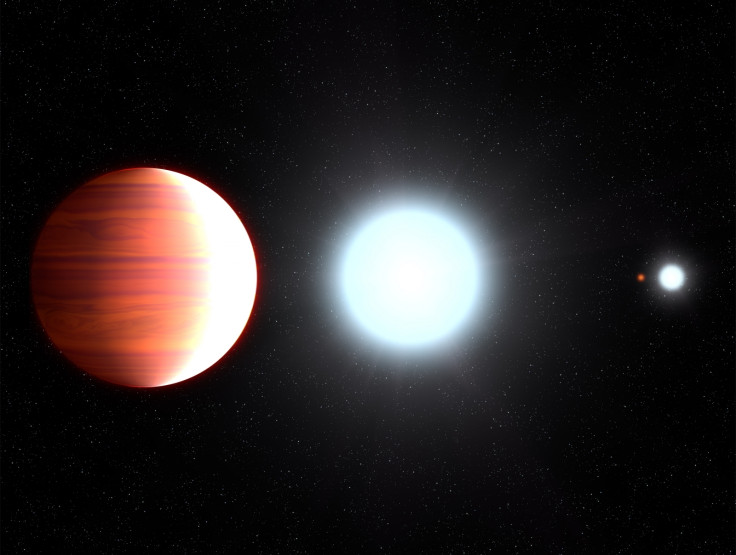Does this exoplanet experience 'sunscreen' snowfalls?
The atmosphere on the darker side of hot exoplanet Kepler-13Ab was found to experience snowing in the form of titanium oxide.

The latest discovery from Nasa's Hubble telescope hints at the presence of titanium oxide – the active ingredient found in most sunscreen lotions – in the atmospheric snow of hot exoplanet Kepler-13Ab.
A group of astronomers from Penn State University suggest that this particular ingredient snows on the side of the planet which remains completely dark and is not exposed to its host star.
Located some 1,730 light years from Earth, Kepler-13Ab is so close to its parent star that it is tidally locked, just like the Moon is locked to Earth. The side facing the star remains lit, while the other side stays in permanent darkness.
In this case, the atmosphere on the darker side was found to experience snowing in the form of titanium oxide.
The astronomers used Hubble's Wide-field Camera 3 to observe Kepler-13Ab's thick atmosphere in near-infrared light. However, they were not looking for titanium oxide initially.
Instead, they planned to note the day-side atmospheric temperature of the planet as it travelled behind its star during an event which is called secondary eclipse. But, to everyone's surprise, the findings of the observation, published in The Astronomical Journal, were exactly the opposite of what was expected.
Normally, the atmosphere of star-hugging gas giants like this one gets warmer at higher altitudes. But in this case, they observed that the giant exoplanet's atmosphere got cooler as the altitude increased.
This led the researchers to posit that the gaseous form of titanium oxide, which absorbs starlight and reradiates it as heat – making the atmosphere warmer, had been blown away to the colder, darker side by powerful winds. These winds condense the gas into crystalline flakes, forming clouds, which fall down from the upper to the lower atmosphere as snow, thanks to the exoplanet's strong gravitational pull – reportedly six times greater than Jupiter's.
Detailing the phenomenon, Thomas Beatty, Assistant Research Professor of Astronomy at Penn State and the lead author of the study, said, "Presumably, this precipitation process is happening on most of the observed hot Jupiters, but those gas giants all have lower surface gravity than Kepler-13Ab. The titanium oxide snow doesn't fall far enough in those atmospheres, and then it gets swept back to the hotter day-side, revapourises, and returns to a gaseous state."
Beatty also noted that observations like these provided more insights into weather and atmospheric compositions of exoplanets, which would eventually contribute towards analysis in terms of habitability in smaller planets with complex atmospheric features.





















